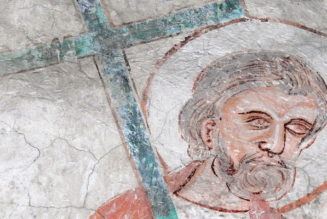
By most accounts, Dignitas Infinita, the Vatican’s new declaration on human dignity, has been received by the Church largely without a hitch. In fact, it might be one of the least controversial high-profile documents we’ve seen from the Francis pontificate in recent years.
This is especially true when compared to the last declaration issued by Cardinal Victor Manuel Fernández and the Dicastery for the Doctrine of the Faith, Fiducia Supplicans. Over three months after that document’s Dec. 19 publication, its approval of non-liturgical blessing of same-sex couples is still generating controversy.
By contrast, Dignitas Infinita is largely being hailed as a refreshing rearticulation of the Church’s teaching on human dignity (though it does have its detractors on both the progressive and more traditionalist peripheries of the Church). In particular, Catholic scholars and leaders have welcomed the document’s application of the Church’s teaching on human dignity to thorny contemporary issues like surrogacy, gender theory, and war.
But that doesn’t mean that the document hasn’t raised questions that still need answers — including on topics as varied as how the document impacts Church teaching on capital punishment, to how its reaffirmation of the Church’s traditional anthropology might limit the impact of the Synod on Synodality.
1. Why Did the Document Take Five Years?
Dignitas Infinita has been a long time coming. According to Cardinal Fernández’s introduction of the text, the Vatican’s doctrine office and its consultors worked on the declaration for over five years.
In fact, the timeline the DDF prefect laid out aligns with a report that the Vatican was working on a document focusing on gender theory as far back in 2018. Reportedly, the impending publication of that document was used as justification for the Vatican blocking the U.S. Conference of Catholic Bishops’ own attempt to comprehensively address pastoral ministry to LGBTQ-identifying people, on the grounds that the Vatican wanted to be first.
But despite hints that the Vatican’s gender theory document was forthcoming, including a 2019 report by CNA, it was never published — until this week.
Except it seems clear that Dignitas Infinita is significantly different in terms of scope and focus than the document was in its previous iterations.
For one, there are passages that were reportedly included in the 2018 Vatican document that did not make it in the final version, including passages that examined more deeply the nature of sexual identity and provided pastoral guidelines regarding sacramental ministry to trans-identifying people. The more comprehensive and pastoral nature of these passages suggests that gender theory was a far more significant focus of the earlier iterations of what became Dignitas Infinita, more so than the six paragraphs devoted to the topic in the final version implies.
Of course, we know that when Cardinal Fernández presented a final draft of the text to Pope Francis in November 2023, the Pope asked him to rewrite it to address a whole gamut of issues violating human dignity, such as war and poverty.
But why did the Pope make the decision five years into the process to dramatically alter the document’s scope — especially after it had been originally conceived as primarily a response to gender theory and sexuality, and the USCCB had been blocked from moving forward on those grounds? Dignitas Infinita’s treatment of gender theory has been applauded by many as a welcome contribution on the topic, but it does seem strange that the U.S. bishops’ collective response was held up for over five years — a period when gender theory has certainly grown more entrenched in American culture and society — for six paragraphs of text.
Some have even speculated that the more sanguine Dignitas Infinita was published as a means to distract from Fiducia Supplicans-related fallout — though that seems unlikely to have been a primary consideration, given that Cardinal Fernández presented what was then a final draft of the document to Pope Francis a full month before the declaration on same-sex blessings was even published.
Whatever the reason for the delay, Church leaders are grateful to have the Vatican’s guidance on gender theory, even if it is less comprehensive than they might have expected.
2. What About the Synod and the Study Groups?
Dignitas Infinita is the second high-profile Vatican document that’s been published in between the first and second sessions of the Synod on Synodality that directly addresses a topic raised at the synod. The first document was Fiducia Supplicans, which was sharply criticized for pushing forward a pastoral approach to same-sex attracted Catholics that had decidedly not been endorsed at the October 2023 session, renewing concerns that the Synod was effectively a dog-and-pony show.
Dignitas Infinita was obviously more collaboratively developed than Fiducia Supplicans — after all, it took over five years to produce and went through various rounds of review by DDF members and consultors. But like Fiducia Supplicans, the new declaration makes a striking intervention on a topic that was seemingly set for further consideration in the synodal process: gender theory.
In fact, the Vatican recently announced the creation of a dedicated Synod study group to “reinterpret” the traditional categories of Catholic anthropology, with an eye to ensuring that pastoral experience shapes doctrine. The group, which will be made up of select theologians and curial officials, will continue its work beyond October’s final Synod session, leading to speculation that it could be the means of shifting the foundations of Church teaching on issues like identity, embodiment, and sexual attraction.
But Dignitas Infinita strongly reaffirms the Church’s traditional anthropology, underscoring that one’s physical body, including the facts that it is sexed, is “a gift from God” that is “to be accepted with gratitude and placed at the service of the good,” contrasting this grateful acceptance with a desire for “personal self-determination” that “amounts to a concession to the age-old temptation to make oneself God.”
This forceful doctrinal reaffirmation seems to curtail or limit what the synod study group focused on reevaluating the Church’s anthropological categories may be able to get into. And, if so, it will likely fuel critiques from some progressive Catholics that the Synod, while a massive undertaking, is something of a paper tiger. On the other hand, the study group’s focus on pastoral praxis as an influence upon doctrine suggests that those seeking big changes could still have an opening.
3. Has the Church’s Teaching on Capital Punishment Shifted — Again?
Pope Francis’s papacy has been marked by some significant shifts in the language used to describe the Church’s teaching on capital punishment, and Dignitas Infinita contains yet another. The declaration states that the death penalty “violates the inalienable dignity of every person, regardless of the circumstances.”
This seems to build off 2018 changes to the Catechism, which described capital punishment as “inadmissible” because it undermined “the inviolability and dignity of the person.” The change was justified, in part, because there is “an increasing awareness that the dignity of the person is not lost even after the commission of very serious crimes.”
Prior to that, the St. John Paul II-approved Catechism had taught that capital punishment could be a legitimate means of punishing criminals “in cases of extreme gravity,” although it emphasized that “if bloodless means” are available to protect society, “public authority should limit itself to such means, because they better correspond to the concrete conditions of the common good and are more in conformity to the dignity of the human person.”
Of course, what’s contained in Dignitas Infinita is nothing that Pope Francis hasn’t said before. In an August 2023 meeting with Portuguese Jesuits, he said the death penalty was “a sin.” “You cannot employ it, but it was not so before.”
But now that view is embedded in a DDF declaration (which came up short of describing the death penalty, or any violation of human dignity, as intrinsically evil). Some, like Washington Cardinal Wilton Gregory, see it as simply the next step in the Church’s steady strengthening of its opposition to the death penalty. But others are concerned that by asserting that the death penalty is a violation of human dignity always and everywhere, Francis’s teaching represents a break from Church tradition, suggesting either that the Church has previously taught in error, or that the Pope himself is in the wrong.
It’s a controversy that certainly wasn’t settled before Dignitas Infinita, but now is only likely to be reenergized in the wake of the declaration — at least in the short term.
4. What Comes Next on Gender Theory?
As noted, the USCCB has waited a long time for the Vatican to publish its own document directly addressing gender theory. Now that it has, will the U.S. bishops jump at the opportunity to address the issue more comprehensively?
Probably. USCCB spokeswoman Chieko Noguchi has already told the media that the bishops are “grateful” to receive the declaration, and “will be studying and reflecting on it.” And as Father Raymond de Souza has noted, the new document is likely to “open new avenues for discussion, apologetics, and evangelization”— and presumably pastoral care.
Of course, the U.S. bishops haven’t been sitting idly by on gender theory while the Vatican prepared Dignitas Infinita. In March 2023, the USCCB issued a doctrinal note emphasizing that Catholic hospitals cannot provide interventions that “transform sexual characteristics of a human body into those of the opposite sex,” and followed that up in June 2023 by approving the development of guidelines to health care institutions on transgender issues. Several individual U.S. bishops have also provided catechetical and pastoral guidance in their own dioceses, such as the Archdiocese of Milwaukee, the Archdiocese of Oklahoma City, and the Diocese of Arlington.
But now that they presumably have the Vatican’s okay, the USCCB can put forward a unified approach to gender theory, not only providing a more comprehensive catechetical engagement with the phenomenon, but also giving U.S. Catholics practical guidance on a number of thorny pastoral questions.
Furthermore, as Notre Dame theologian Abigail Favale told the Register, Dignitas Infinita’s treatment of gender theory, such as its “bombshell” line that “all attempts to obscure reference to the ineliminable sexual differences between man and women are to be rejected,” provides a clear doctrinal “guardrail” that can help set the parameters of pastoral engagement, not only regarding medical interventions, but also the proper use of language, clothing, and single-sex facilities.
So, while the document has arguably delayed a more comprehensive response to gender theory, which many Catholic leaders have wanted for years, its publication is likely to trigger an invigorated focus on the issue.







